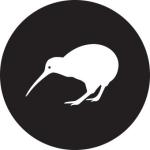Medical world in conflict
This year the Royal New Zealand Army Medical Corps will officially celebrate its centenary. During this time, the Corps has provided assistance in peace support operations, disaster relief and humanitarian aid as well as armed conflict. Recently this has been in areas as diverse as Somalia, Bosnia, Bougainville, Afghanistan and Timor-Leste. Here a Corps member, Warrant Officer Class Two Tim Crowe, says the changing dynamic of conflict is seeing a corresponding shift in medical training in the New Zealand Defence Force.
From Iraq and Afghanistan to shores closer to home, Warrant Officer Class Two Crowe has seen action around the world as a medic in the NZ Army over the last 23 years and he now applies this experience to training at Joint Services Health School at Burnham Army Camp in Christchurch.
“We are relearning, adapting and updating training in many diverse aspects of military medicine all the time. Evidence based medicine researched from the current conflicts in Iraq and Afghanistan shows both similarities and differences in injury patterns from earlier conflicts such as the Vietnam War," says WO2 Crowe.
"Injuries from mines are now more likely to involve vehicle strikes than 'step on' incidents, advances in body armour have meant less acute chest injuries (e.g. the classic gunshot sucking chest wound) but more severe limb and head injuries which previously wouldn’t have been survivable. Now the Medic deployed into an area of conflict such as Afghanistan is likely to encounter IED’s (improvised explosive device) of varying size which produce their own distinct injury patterns and often involve multiple casualties.”
The changing face of conflict, known in the Army as the “3 Block War,” means that all soldiers increasingly require an element of medical training. The 3 Block concept describes the situation where a NZDF troop on patrol may face anything from providing humanitarian assistance on one street, to peacekeeping on the next, escalating to a combat engagement in the third, all possibly on the same day.
Acknowledging this need, NZ Army basic training will be enhanced from 13 to 26 weeks in early-2009 to a format which will encompass recruit-wide medical training.
These skills will also be the foundation for recruits looking to further specialise as medics like WO2 Crowe.
WO2 Crowe says the changing nature of global security as well as the weapons being used coupled with advancements in drugs, science and medicine means medical training needs to be equally fluid and constantly developing to keep pace, albeit based on a foundation of demonstrated evidence and research.
“We previously thought that training in applying IVs and introducing morphine was important in the initial phases of treatment. Now we know that practicing stopping haemorrhaging and focusing on getting the basics right such as keeping the patient warm and their airways secure are more vital skills. It sounds simple, but in a high risk/ high stress environment, it takes a lot of practice to do well.
“In places such as Afghanistan and the Solomon Islands we are also dealing with multiple diseases such as malaria and TB on a frequent basis. Preventing our forces from being infected or reducing the risks is part of the job. Communicable exotic diseases rare or non-existent in NZ are commonplace complications when dealing with injured or ill civilians as well. In Timor-Leste for example, our medics found dealing with acute childbirth emergencies brought on by febrile illnesses like Malaria in remote locations was a regular situation they were encountering, and this required adaptation of our training,” WO2 Crowe says.
“Our medics train for the operating environment they will encounter when they deploy as well as at what they may face in the field in New Zealand,” WO2 Crowe says,
“These environments often differ to say, St. John Ambulance or other civilian national agencies, in that we often need to act and operate in a high threat situation.”
“A lot of what our work is Primary Health Care, General Practice-type stuff. We’re first on the scene in trauma and sometimes the only available health care provider for people in remote locations. We have to deal with all types of conditions: Knee injuries, open wounds, diarrhoea, rashes, the flu, conditions both mundane and serious. 80-90% of what we do is supporting the troops as the first point of contact in the field.”
Developing a relationship with a makeup school a few years ago has also augmented training.
“We identified the need to increase the realism for training and what that also meant was to make the field training environment more dynamic. One of the team touched base with a professional industry training provider in Auckland that also did horror and casualty-type makeup as part of their courses. This has helped our moulage work develop significantly.”
Tim has personally focused on enhancing his casualty moulage techniques since 2002 and he is considered among the best in the field.
“The realism helps our students ask: How I deal with this now? Realistic trauma training teaches students to get through initial stress responses and tunnel vision present on arrival at a scene and makes the students think and act faster and more effectively.”
WO2 Crowe says the training is paying dividends and the feedback from students is consistent. They appreciate the chance to be challenged in an environment that is as real as we can make it.
“They want to make a difference in an area where difference can be made. They recognise they can make a huge impact to people’s lives.”
ENDS
RNZAMC Centenary online: http://www.army.mil.nz/at-a-glance/events/rnzamc/default.htm
